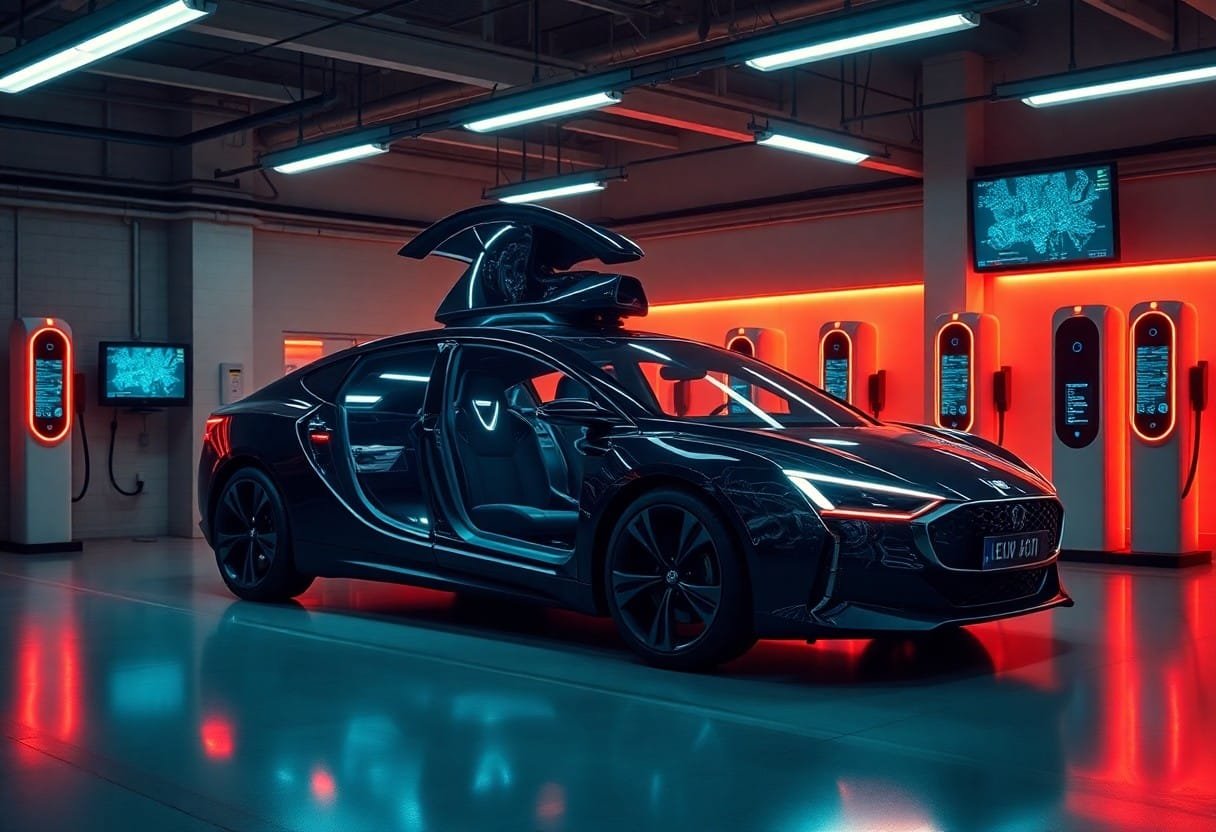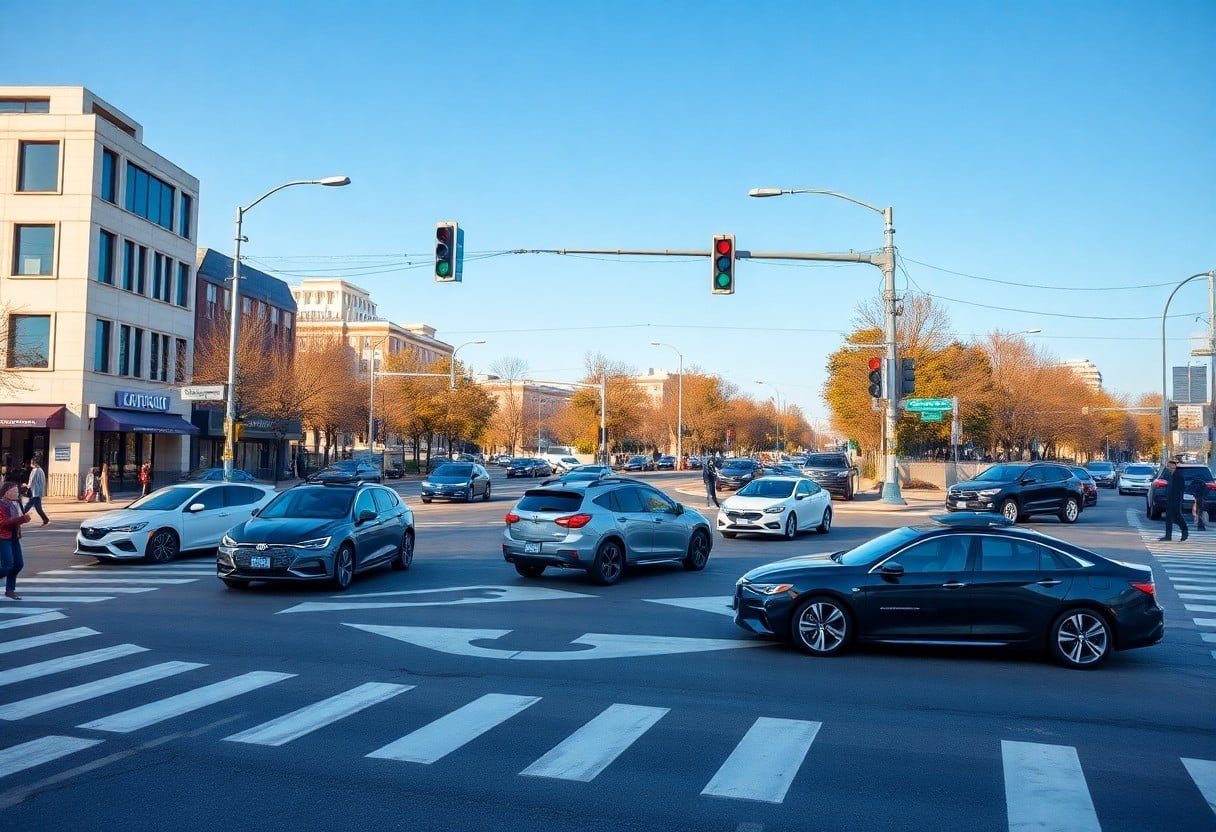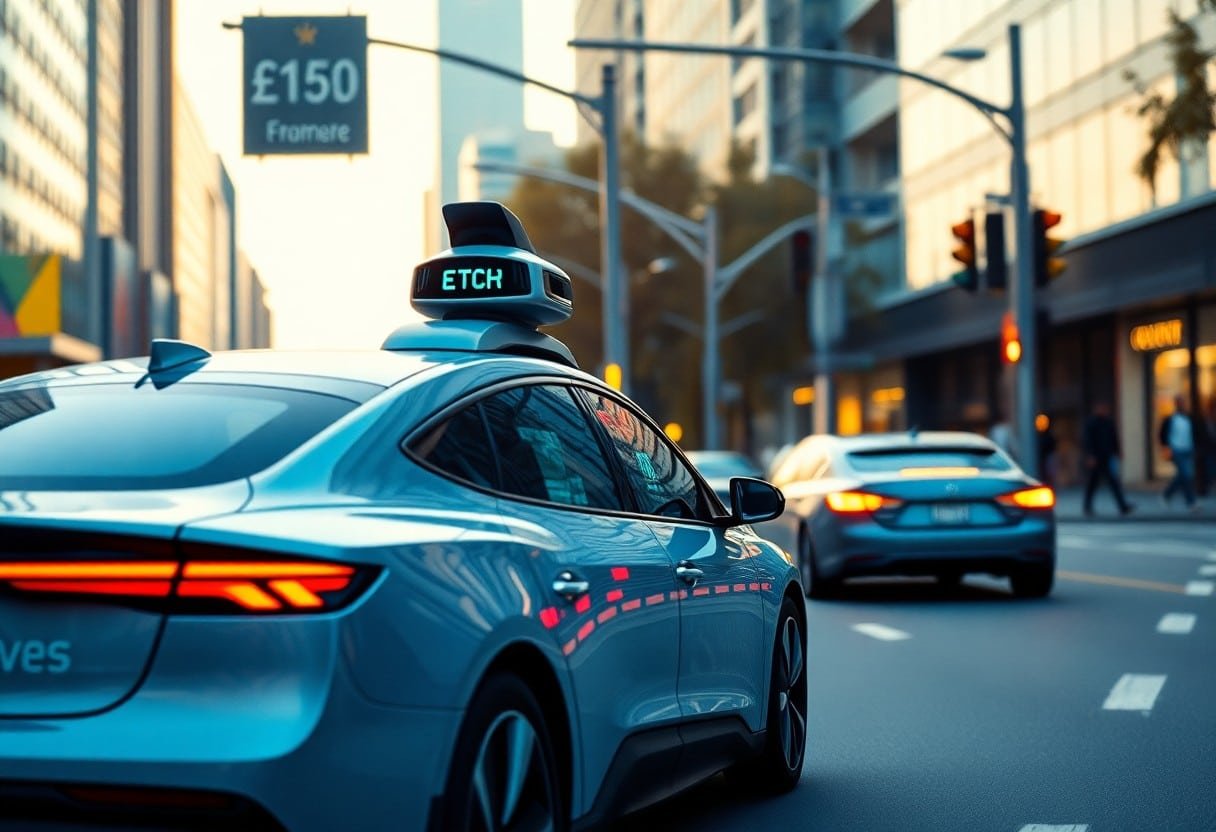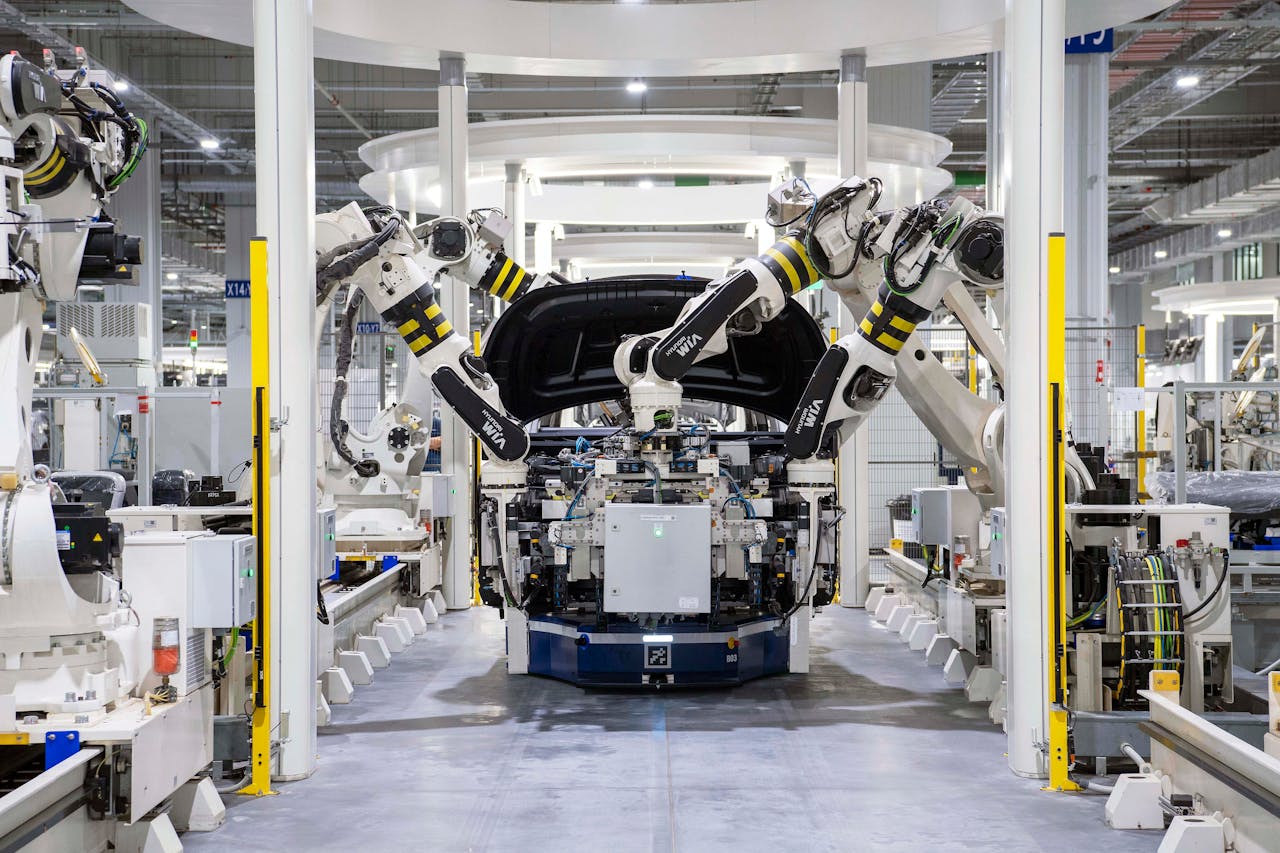Over the next few years, you will witness groundbreaking automotive technologies revolutionizing self-driving cars and connected vehicles. By 2025, advancements in artificial intelligence, sensor integration, and vehicle-to-everything (V2X) communication will enhance safety and efficiency, transforming your driving experience. These innovations not only promise to increase convenience but also aim to reshape urban mobility, making your travels smarter and more enjoyable.

Key Takeaways:
- Advancements in AI and machine learning are enhancing vehicle perception and decision-making capabilities for improved safety and efficiency.
- Vehicle-to-everything (V2X) communication is transforming traffic management and enabling real-time data sharing between cars, infrastructure, and pedestrians.
- Enhanced sensor technologies, including LiDAR and computer vision, are significantly increasing the accuracy of self-driving systems and environmental awareness.
The Brain Behind the Wheel: AI-Powered Decision Making
AI algorithms in self-driving cars act as a centralized decision-making hub, processing vast amounts of data to interpret the surrounding environment. These systems evaluate pedestrian behavior, traffic signals, and other vehicles, enabling your car to make split-second decisions that prioritize safety and efficiency. As these technologies advance, the ability of your vehicle to navigate complex scenarios autonomously will significantly improve, leading to a safer driving experience.
Machine Learning Algorithms Enhancing Safety
Machine learning algorithms continuously analyze data from various sensors to predict potential hazards, minimizing your risk on the road. These systems learn from millions of driving hours, allowing them to recognize patterns in driver behavior and environmental conditions, which helps your vehicle react better in emergencies. With ongoing updates, your car’s safety features become smarter over time, adapting to new challenges and improving your confidence in autonomous driving.
Real-Time Data Processing for Optimal Navigation
Real-time data processing enables your vehicle to assess traffic conditions, obstacles, and route changes instantaneously, ensuring timely navigation adjustments. This capability allows for dynamic rerouting and optimizing travel time, providing a seamless driving experience. Integration with cloud computing enhances this function, allowing your car to tap into broader data streams for more informed decision-making on the go.
Real-time data processing relies on a network of sensors, cameras, and connected infrastructure to provide up-to-the-second updates on road conditions, traffic patterns, and weather impacts. For instance, if there’s an accident on your usual route, your vehicle can instantly identify alternative paths by leveraging GPS data and satellite imagery, seamlessly guiding you to your destination while avoiding congestion. This system not only saves time but also enhances overall travel safety, allowing you to navigate complex urban environments with ease and confidence.
Roadmap to Connectivity: Vehicle-to-Everything (V2X) Communication
Your vehicle will increasingly communicate with the surrounding environment through V2X technology, enhancing safety and efficiency on the roads. This communication includes Vehicle-to-Vehicle (V2V), Vehicle-to-Infrastructure (V2I), and Vehicle-to-Pedestrian (V2P) interactions, allowing cars to share real-time data. As cities adopt smart infrastructure, you’ll benefit from informed decision-making, such as avoiding collisions and optimizing routes based on traffic conditions. This seamless integration makes roads safer and transforms your driving experience into a more connected journey.
Harnessing the Power of 5G for Improved Interactions
5G networks will drastically enhance V2X communication, offering you ultra-reliable, low-latency data transfer. With speeds up to 100 times faster than 4G, vehicles can transmit critical information in real-time, improving safety features like automatic braking or collision avoidance systems. This new connectivity allows for dynamic exchanges between vehicles and infrastructure, enabling better traffic flow and more informed driving interactions. As 5G becomes widespread, you’ll experience seamless connectivity that transforms everyday driving.
The Role of IoT in Streamlining Traffic Management
The Internet of Things (IoT) plays a pivotal role in optimizing traffic management systems, providing you with real-time updates and insights. By connecting traffic signals, road sensors, and vehicles, IoT enables more responsive traffic control measures. You’ll benefit from smoother commutes, as systems adjust traffic lights based on current vehicle flow, reducing congestion and travel times significantly. With connected vehicles feeding data back to centralized systems, urban planners can analyze patterns and implement strategies that improve overall traffic efficiency.
As IoT continues to evolve, cities will leverage vast networks of connected devices to create smart traffic ecosystems. For example, intersection sensors can communicate with approaching vehicles to adjust light timings based on real-time traffic density. Studies have shown that cities employing IoT in their traffic management can reduce congestion by up to 30%. This means enhanced mobility for you as a driver, along with environmental benefits from decreased idling and lower emissions. Overall, the integration of IoT technology will revolutionize how you navigate urban landscapes.
Visionary Design: Advanced Sensor Technology
Your self-driving experience in 2025 will heavily rely on advanced sensor technologies that offer unparalleled awareness of the vehicle’s environment. These innovations include LiDAR, radar, and camera systems, significantly enhancing the precision of navigation and obstacle detection. Sensors integrate seamlessly to create real-time 3D maps that inform your car’s decisions, ensuring a safer ride. For insights on leading companies pushing these boundaries, check out the Top Autonomous Vehicles Companies to Watch in 2025.
Key Sensor Technologies
| LiDAR | Uses laser pulses to create detailed 3D maps of the environment. |
| Radar | Detects distance and speed of nearby objects using radio waves. |
| Camera Systems | Provides high-resolution images for object recognition and classification. |
LIDAR vs. Camera Systems: The Great Debate
The ongoing debate between LiDAR and camera systems centers on their respective strengths. LiDAR offers precision in distance measurement and detailed mapping, while cameras provide rich visual information crucial for interpreting complex environments. You might find that a combination of both systems enhances overall safety and functionality.
How Sensor Fusion Creates a Comprehensive Driving Picture
Sensor fusion integrates data from LiDAR, radar, and cameras, yielding an expansive view of the driving environment. This synergy boosts reliability, enabling your vehicle to accurately assess distances, speeds, and various roadway conditions. By analyzing and cross-referencing inputs, sensor fusion helps mitigate blind spots and enhances situational awareness.
In sensor fusion, diverse data sources unite to enhance decision-making accuracy. For instance, the combination of radar’s range detection and camera’s visual recognition can identify pedestrians in low visibility situations where one sensor may falter. This holistic approach improves your vehicle’s ability to respond to dynamic driving scenarios, significantly elevating safety and performance standards in autonomous technology.
Energy Efficiency and Sustainability: The Eco-Friendly Revolution
As the automotive industry pivots toward sustainability, energy efficiency becomes a core component of self-driving and connected vehicles. Eco-friendly innovations, such as lightweight materials and advanced aerodynamics, enhance fuel efficiency, while integration of renewable energy sources plays a pivotal role. You will witness a surge in vehicles designed to minimize carbon footprints, utilizing sustainable manufacturing processes and materials that support a greener future.
The Impact of Electric Powertrains on Autonomous Vehicles
The shift to electric powertrains significantly influences the development of autonomous vehicles. With instant torque delivery, electric motors enhance acceleration and provide smoother operation, vital for safe navigation in urban environments. You’ll experience reduced maintenance costs and improved overall efficiency as these vehicles leverage regenerative braking technology, creating a symbiotic relationship between autonomy and sustainability.
Innovations in Battery Technology for Extended Range
Battery technology is key to extending the operational range of electric autonomous vehicles, enabling longer drives between charges. You’ll see advancements such as solid-state batteries and fast-charging solutions, dramatically increasing both energy density and safety. These innovations not only enhance performance but also assure you of driving longer distances without compromising on charging convenience.
Solid-state batteries, for instance, surpass traditional lithium-ion batteries in energy density, often achieving ranges over 500 miles on a single charge. With lighter materials and safer chemistries, they reduce the risk of fire and degradation, providing longevity to your vehicle’s energy storage. Fast-charging technologies are also emerging, allowing you to recharge up to 80% in just 15 minutes, transforming your experience of spontaneous road trips and daily commutes alike. As these innovations proliferate, you can expect autonomous vehicles to become more viable and convenient, marking a significant step towards sustainable transport solutions.

Regulation and Ethics in Autonomous Driving
The landscape of autonomous driving regulations is rapidly evolving, requiring you to stay informed about compliance, liability, and safety standards. As you navigate these changes, understanding the implications of existing laws and potential reforms is vital for both consumers and industry players. For a detailed breakdown, check out the Top 5 Self-Driving Car Companies in 2025.
Navigating the Legal Landscape: Current Challenges
Legal frameworks around self-driving technology face significant hurdles, including varying state laws and federal regulations. Your awareness of these differences can directly influence how autonomous vehicles are integrated into public roads, particularly as manufacturers seek uniformity and clarity in legal obligations.
Ethical Considerations: Balancing Safety and Progress
Ethical dilemmas arise as you consider the safety versus innovation debate in self-driving technology. Decisions regarding who is prioritized in emergencies, the transparency of AI algorithms, and accountability for accidents all involve nuanced ethical discussions that shape public perception and regulatory responses.
Currently, automakers face tough decisions on how their systems respond in crisis scenarios—should they prioritize passenger safety, pedestrian welfare, or other considerations? This balancing act requires extensive data analysis to predict outcomes, therefore shaping not just technology but also public trust. With consumer acceptance critical for deployment, ongoing ethical assessments of decision-making algorithms will be vital as you embrace the future of autonomous driving.
Conclusion
Drawing together the advancements in automotive technologies, by 2025, you will witness a remarkable evolution in self-driving cars and connected vehicles. Innovations such as improved AI algorithms, enhanced sensor systems, and robust connectivity will enhance your driving experience, offering greater safety and convenience. As these technologies become integrated into everyday vehicles, you will find that your interaction with transportation becomes more seamless and intuitive, solidifying the importance of staying informed and adaptable in this rapidly changing landscape.



